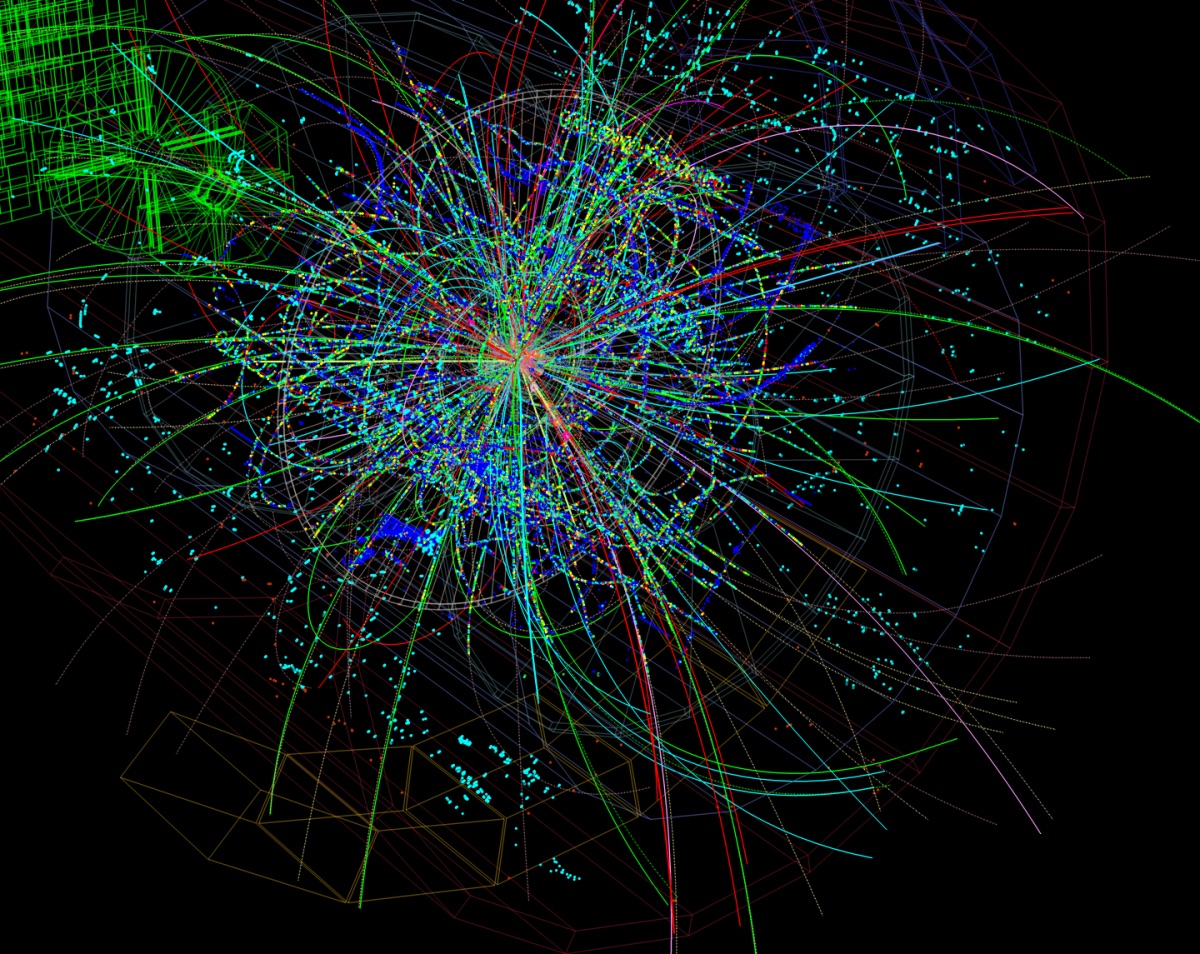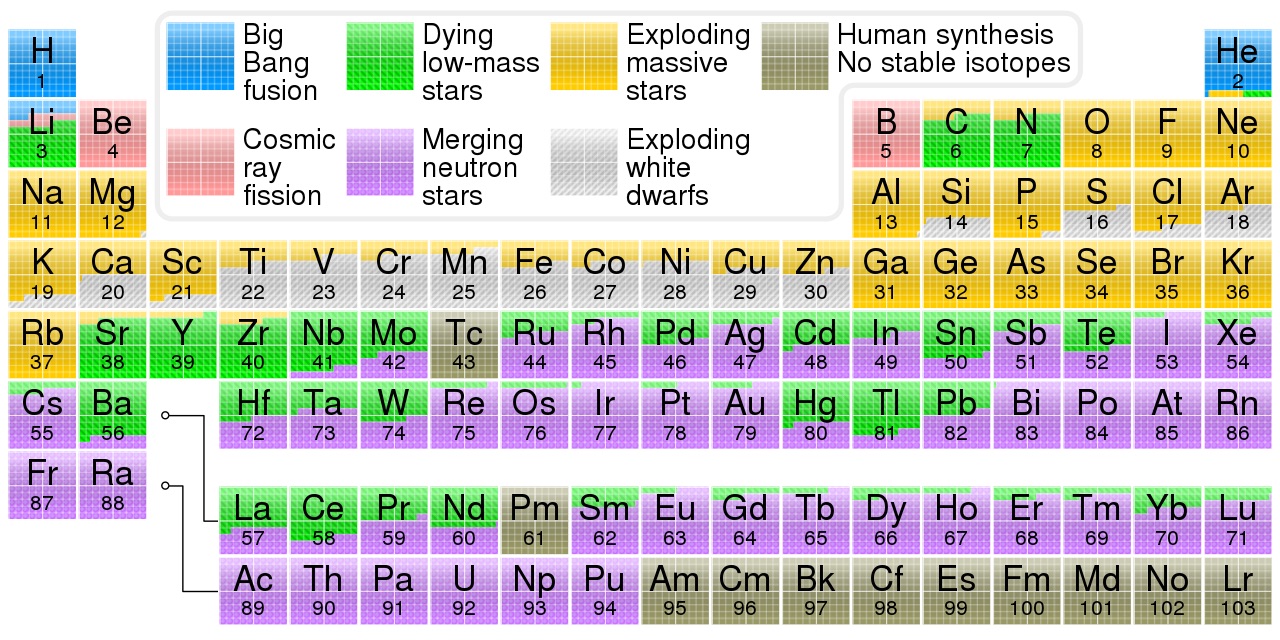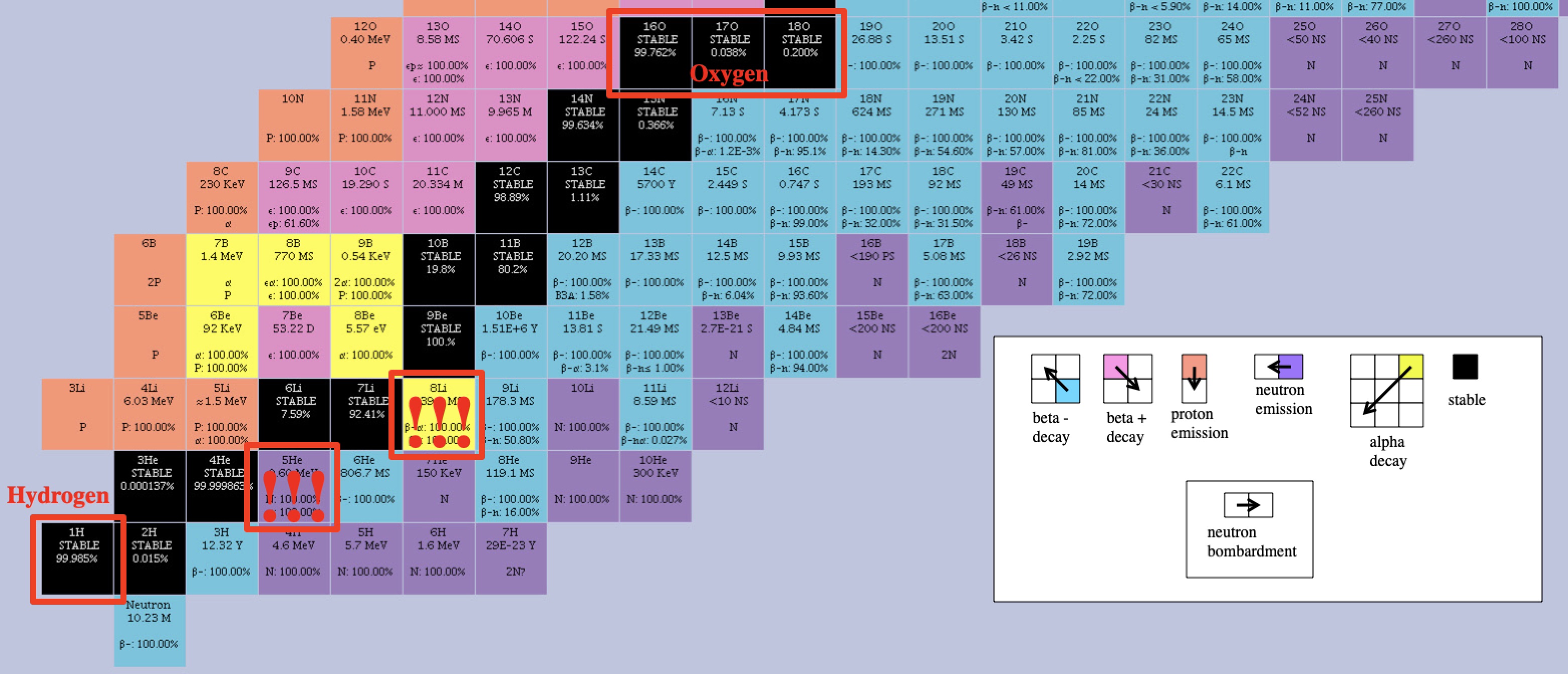Physicist: This was an interesting back-and-forth, so the original questions are italicized.
What was the energy at the start of the universe and how did it create matter?
If the question is “how much?” or “where did it come from?”, the answers are unfortunately “a hell of a lot” and “we can only guess”. These are still very open questions. There are lots of clever guesses, but there isn’t much solid, direct data to pick out which guesses are good.
As for how it became matter, that’s “easy”: when you get enough energy in one place, new particles form spontaneously. If the new particle has mass m, then the energy present is reduced by mc2. This is Einstein’s famous energy/mass conversion rate: E=mc2.
Kinetic energy (the energy of movement) is the easiest way to concentrate a lot of energy in one place. That’s why we use “particle accelerators” like CERN to slam particles together, instead of using huge lasers or lenses or anything else. We can get individual particles moving so fast that they carry many thousands of times their mass-equivalent in kinetic energy. When they do slam together all of that energy is released as a burst of new particles plus the kinetic energy of those (typically very fast) particles plus some light.

The trajectories of newly formed particles flying away from the collision of two gold nuclei. When describing these events, CERN scientists inevitably make “explodey sounds” with their mouths.
The early universe was so hot that all of the particles flying around were moving at particle-accelerator speeds and new particles were generated continuously. However, when we (people) make new particles they always appear in matter/anti-matter pairs, so how the universe has managed to have more matter than anti-matter is a mystery.
Or rather, since we’re not going to call ourselves “anti-matter”, it’s a mystery how the universe managed to not be balanced between… the two types of matter.
Is this energy stable or not, and if it isn’t how do you make it stable?
You can produce new matter with any kind of energy, so pick your favorite. There’s no such thing as pure energy, so whatever form you choose will be one of the regular, boring types: hot water, moving stuff, light, etc. and the way you’d store it to make it stable is just as dull: charged battery, stretched spring, spinning flywheel, etc.
However, generating matter takes an colossal amount of energy. The Hiroshima bomb was around a gram’s worth of energy. Humanity consumes the equivalent of around 5-10 metric tons of energy per year (that’s a lot more than I had been expecting before looking it up). You could create enough matter to make a sandwich, or you could power New York City for about a year instead. Moral is: if you need matter, go out and collect it.
And also is it possible to contain this amount of energy in an enclosed space? (eg. a spaceship)
The greatest power source we’ll ever reasonably have access to is hydrogen to helium fusion, which converts about 0.7% of the hydrogen’s mass into energy, leaving 99.3% as helium. So (assuming perfect efficiency), if you want to turn energy into matter, starting with more than 100 times as much hydrogen is a good place to start.
When matter falls into black holes, it tends to spiral in dense, extremely hot disks of gas first. This gas gets hot enough that it radiates in the x-ray spectrum (the hotter something is, the bluer the light it emits and x-rays are… way to blue to see). Under ideal conditions, matter falling into a rapidly spinning black hole can radiate the equivalent of about 40% of their mass.
This isn’t a great system. At the end of the day, you’re throwing away matter to create the energy for less matter and you’re doing it as close as you can get to a black hole, which is a famously unpleasant place to be.
So if you want to store a lot of energy on a spacehip, it needs to have massive hydrogen fuel tanks, and if you want to use your fuel efficiently than fusion would allow, then you need a black hole too.
And what type of matter would it produce?
Newly created matter is a random assortment of all the fundamental particles it’s possible to create at the given energies. For example, an electron (the lightest particle) has a mass equivalent of about 0.5 megaelectronvolts, which is the energy gained by a particle accelerated by half a million volts. That means that if your accelerator uses slightly more than a million volts, then you’ll be making electron/positron pairs (positrons are anti-electrons), and if it uses less than a million volts to accelerate its particles, then you’re just making light. It’s possible to “dial in” particular particles by carefully choosing the speed and type of the particles in your accelerator, but even then you’re not going to be creating cats and dogs or even entire atoms; just lots of individual fundamental particles.
Most fundamental particles are extremely unstable and decay very rapidly into radiation and the few stable particles: protons, electrons, and their anti-particles. Neutrons aren’t stable on their own, but they last for about 15 minutes before decaying, which is more than enough time to use them. So that’s ultimately the answer to what kind of matter we can create: protons, neutrons, and electrons (and their anti-particles).
When those protons and electrons are slowed down after their violent creation, you can make hydrogen or even deuterium (hydrogen with an extra neutron), but that’s the most advanced matter-creation ever achieved. There aren’t presently any prospects for doing better.
The inevitable half of the new matter made up of anti-particles will go on to annihilate whatever normal matter it runs into, so it either needs to be thrown out or stored very carefully. Preferably stored. After all the trouble of creating new matter, you don’t want to just throw out half of it (destroying a bunch of perfectly serviceable matter somewhere else in the process).
And also whether oxygen will be produced?
Nope! Or at least, almost nope. Individual protons and neutrons, sure. Hydrogen with some effort, yes. But in order to create a useful amount of heavier elements, existing matter needs to be fused (through fusion). The inside of stars is presently the only environment where it seems to be possible to create elements above helium in any abundance. We’re nowhere remotely close to fusing elements above hydrogen in our fusion reactors. Even the Sun is incapable of fusing helium into anything bigger. Near the end of its life, as it runs out of hydrogen fuel and its core collapses, the Sun will briefly fuse helium, but even then it won’t make oxygen.
It’s hard to convey how difficult it is to build the atoms that go into building people. The oxygen in the air you’re breathing right now has already had a hell of a life, born riding a supernova shock wave out of the core of a star and into interstellar space.

The natural sources of all the elements. Artificial elements are created atom by atom, and almost everything else is made in supernovas and neutron star collisions.
Artificial isotopes can be created by bombarding existing isotopes with “slow” neutrons, some of which stick to the nuclei of the target material’s atoms. Just like the creation of particles, this is a random and extremely inefficient process. Technically you can make oxygen, a few atoms at a time, by using the neutrons your particle accelerator accidentally created. But this is a long way from being a source of breathable air.

Elements (the number of protons) increases upward and the number of neutrons increases to the right. Every isotope that isn’t black is radioactive and will decay into another isotope according to the rules in the box. The big tool we have for making new nuclei is neutron bombardment, which moves an atom one to the right. Starting from hydrogen, a couple of neutrons will get you to tritium (“3H” on the bottom row) which decays to helium-3 (“3He”). With a spectacular burst of neutrons you can get a few atoms to jump helium-5 and lithium-6 (the “!!!” squares) before they decay in the “wrong direction” and then neutron bombardment and beta- decay will eventually get you to oxygen. But not in any hurry.
So if you want to make oxygen efficiently, you really need to blow up a star bigger than the Sun. Just start with several solar-system’s worth of hydrogen, pack it together into a star, let it simmer for a few million years until it supernovas, then collect and sort what comes flying out. Easy.
If your spaceship is big enough to hold a black hole for power and a couple massive stars for fusion, then you can create oxygen. But at some point you have to step back and ask what the spaceship is for. As long as you’re slinging stars around, why not grab a nice planet to live on while you’re at it?







150 Responses to Q: How is matter created? Can we create new matter and would that be useful?